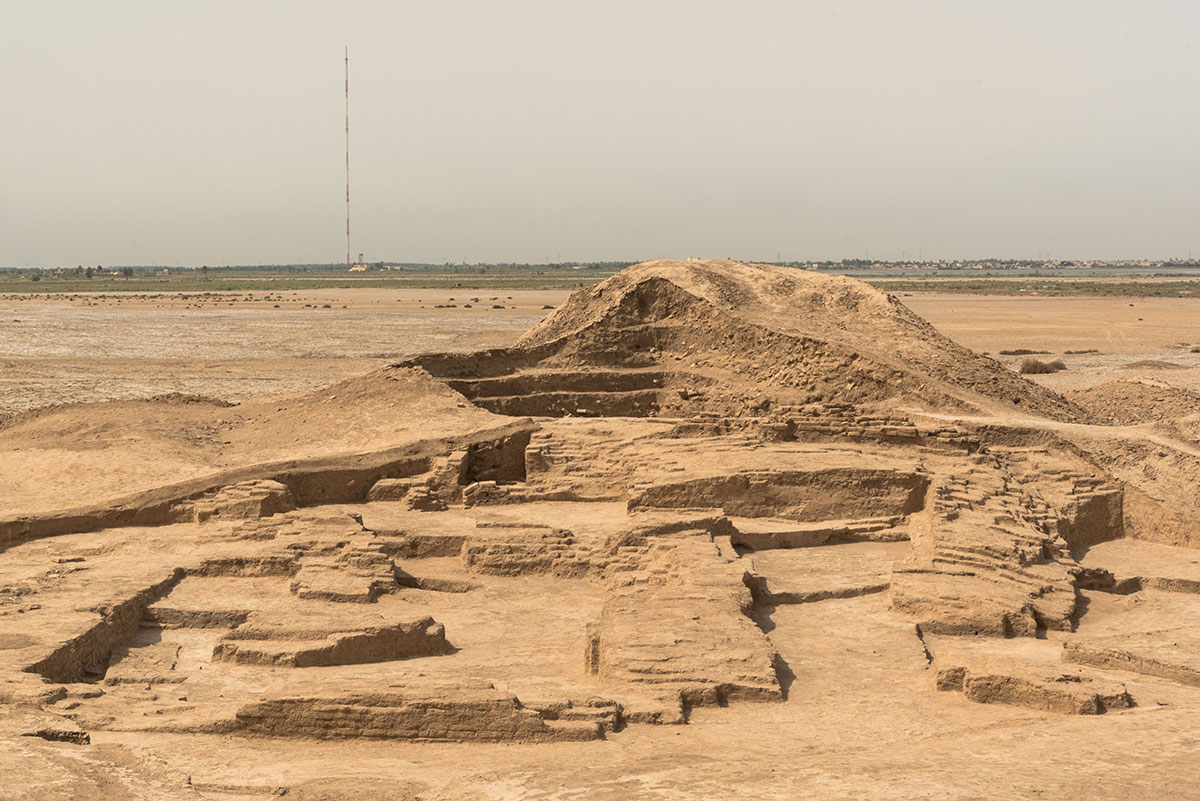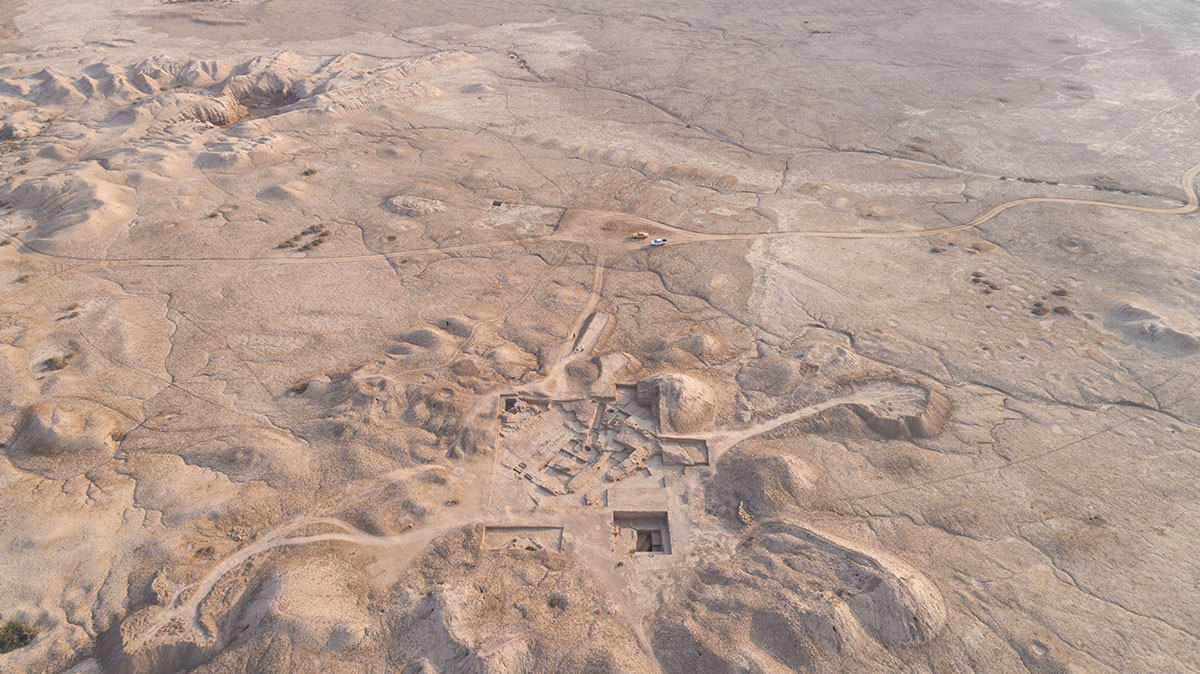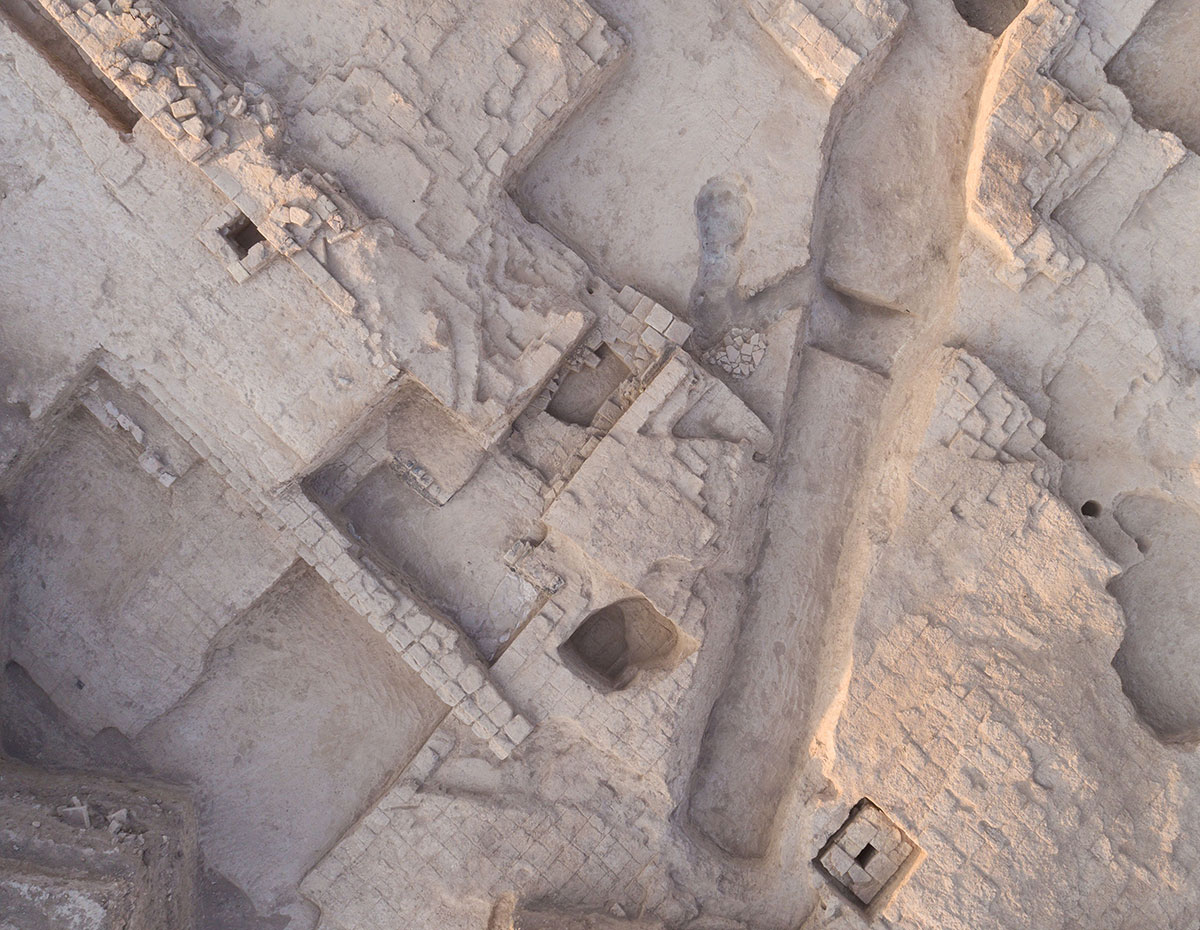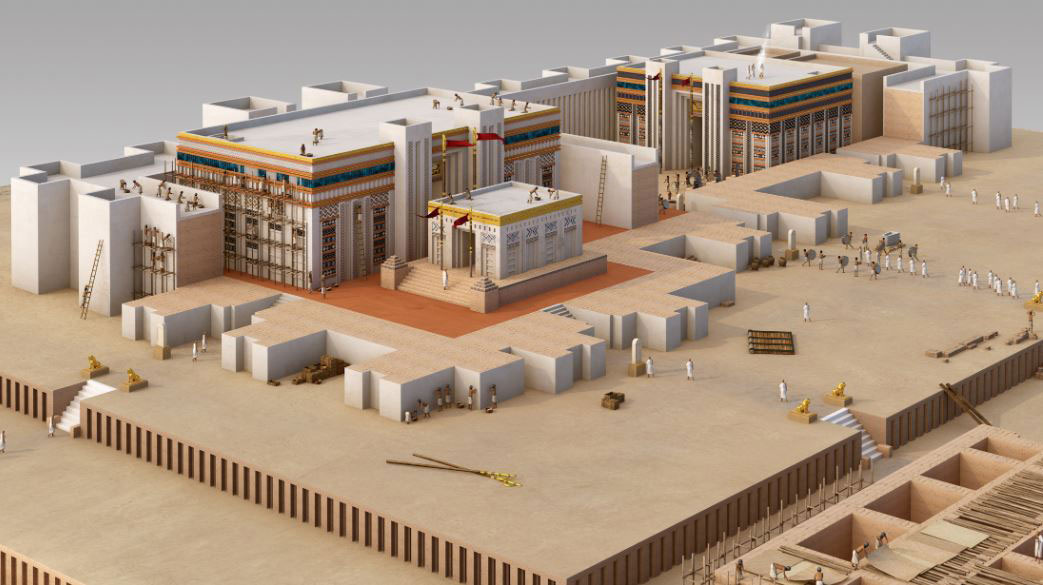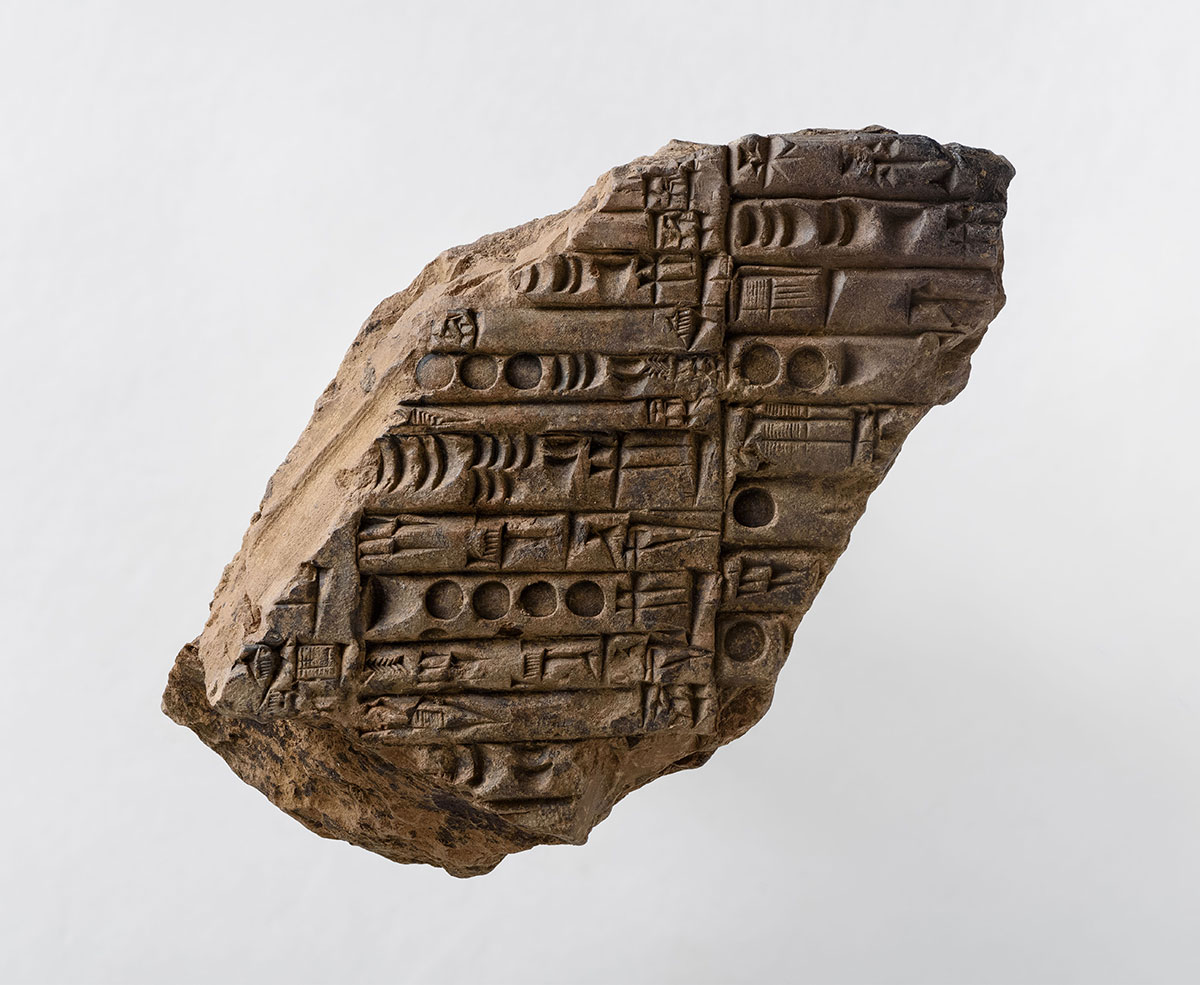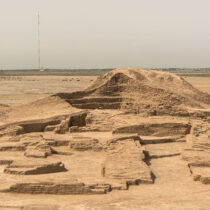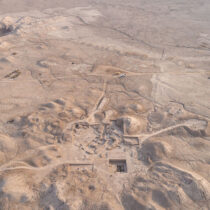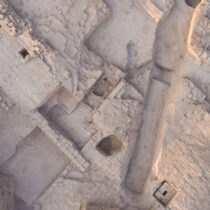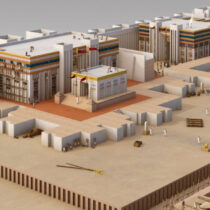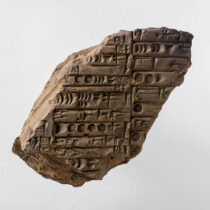A team of archaeologists have discovered the remains of a lost palace of the kings of Girsu, in modern day Tello, Southern Iraq. Dating back at least 4,500 years to the third millennium BCE, this significant discovery is a result of the Girsu Project, a joint initiative and new holistic approach to saving endangered heritage sites between the British Museum, the State Board of Antiquities and Heritage (SBAH) of Iraq, and the J. Paul Getty Trust and Museum.
Tello is the modern Arabic name of the ancient Sumerian city of Girsu, one of the earliest known cities in the world. Sumer is one of the first civilisations of the ancient world and the site is one of the greatest treasures of Iraq. Between 3,500 and 2,000 BCE, the Sumerians invented writing, built the first cities and created the first codes of law. Girsu’s discovery 140 years ago, revealed to the world the existence of the Sumerian civilisation, and brought to light some of the most important monuments of Mesopotamian art and architecture.
Last year, preliminary remote sensing work at Girsu, using cutting-edge technology and drone photos, has located important subsurface remains of a vast complex, previously unknown, at the site of Tablet Hill. The site had been ravaged by destructive 19th-century excavations and 20th century conflict. The palace is a significant new discovery, suggesting that still-undisturbed ancient remains lie at the heart of Tablet Hill. In the autumn 2022 the first mudbrick walls of the palace were identified and more than 200 cuneiform tablets, administrative records of the great city, discarded in 19th-century spoil heaps, were rescued and taken to the Iraq Museum, Baghdad.
Another exciting discovery is the main sanctuary of the great Sumerian god, Ningirsu – from whom the city takes its name. The temple has been identified in the sacred precinct called the Urukug. The temple is named Eninnu, the White Thunderbird, and was revered as one of the most important temples of Mesopotamia. Until the renewed fieldwork of the Girsu project, the Eninnu temple was only known by ancient inscriptions unearthed at the site 140 years ago. The search for the Eninnu has obsessed generations of archaeologists and its recent recovery is an important milestone in the renewed exploration of southern Iraq after decades of fieldwork interruption.
These exciting new discoveries have been revealed at a joint press conference in London, on the occasion of the UK visit of the Iraqi Culture Minister, Dr Ahmad Fakak Al-Badrani, joined by British Museum Director, Hartwig Fischer, Ambassador for the Republic of Iraq to the UK, H.E. Mr Mohammad Jaafar Al-Sadr, the Director General of the SBAH, Dr Laith Hussein, and Dr Timothy Potts, Maria Hummer-Tuttle and Robert Tuttle Director of the J. Paul Getty Museum.
The Girsu Project, led by the British Museum and funded by the Getty, builds on the legacy of the Museum’s Iraq Scheme, developed in 2015 and first funded by the British Government in response to the destruction of heritage sites in Iraq and Syria by Daesh (or Islamic State). The Girsu project addresses the damage caused by early excavations and modern looting. The programme delivers high-level field training and management of a world-class heritage site, training archaeological students and site conservators from Iraq in detailed techniques of rescue excavations. This includes documenting, re-excavating and conserving some of the most important remains of ancient Iraq. To date, the programme has trained 27 participants across three seasons. This approach provides a unique model of practice for other heritage sites, taking a holistic approach that combines research, training, site conservation and heritage management.
On a recent visit to Iraq in November 2022, Director of the British Museum, Hartwig Fischer, visited the site at Tello and attended a press conference at the headquarters of the SBAH in Baghdad. The event celebrated the Girsu Project and the collaboration between the British Museum, the SBAH, and the Getty, with the shared vision of the protection of cultural heritage, capacity building, and cutting-edge research.
Dr. Ahmed Fakak Al-Badrani , The Iraqi Minister of Culture, says: “The British archaeological excavations in Iraq will further unveil significant ancient eras of Mesopotamia, as it is a true testimony to the strong ties between the two countries to enhance the joint cooperation between the two countries.”
Dr Hartwig Fischer, Director of the British Museum, says: “The collaboration between the British Museum, State Board of Antiquities and Heritage of Iraq, and the Getty represents a vital new way of building cooperative cultural heritage projects internationally. We are delighted that todays’ visit could celebrate the recent discoveries, that are the result of this collaboration, and continue the British Museum’s long-term commitment to the protection of the cultural heritage of Iraq, the support of innovative research, and the training of the next generation of Iraqi archaeologists at Girsu. While our knowledge of the Sumerian world remains limited today, the work at Girsu and the discovery of the lost palace and temple hold enormous potential for our understanding of this important civilisation, shedding light on the past and informing the future.”
Dr Laith Hussein, Head of State Board of Antiquities and Heritage, says: “The constructive cooperation between the State Board for Antiquities and Heritage (SBAH) and British Museum, through joint excavation missions and archaeological training schemes, represents a significant milestone in the historical relations between the two institutions and a great staging ground for joint efforts aimed at developing ways of bilateral cooperation, to ensure the development of highly experienced cadre in preserving cultural and historical heritage.
Dr Sebastien Rey, Curator for Ancient Mesopotamia and Director of the Girsu Project, says: “New discoveries in Iraq highlight the success of the latest British Museum partnership with the State Board of Antiquities and Heritage and the Getty through the Girsu Project. Girsu is one of the most important heritage sites in the world, yet little is known about it. It is also a unique site to deliver a training programme on rescue archaeology for heritage professionals and students in Iraq in the context of a fully-fledged research project. Over eighty years of fieldwork interruption at the site have taken their toll. The Girsu Project with the support of the Getty is a remarkable opportunity to secure this extraordinary site’s long-term conservation.”
Dr Timothy Potts, Maria Hummer-Tuttle and Robert Tuttle Director of the Getty, says: “Through its collections, exhibitions, research and publications the Getty seeks to promote the understanding and preservation of the world’s artistic and cultural heritage. The ancient world has been a particular focus of the Museum’s programs at the Getty Villa, and we are therefore delighted to have partnered with the British Museum on the Girsu Project in Iraq. This innovative program provides critical support for the uniquely important archaeological site of Girsu (modern Tello), through the training of Iraqi specialists entrusted with its development for sustainable archaeology and tourism.”
